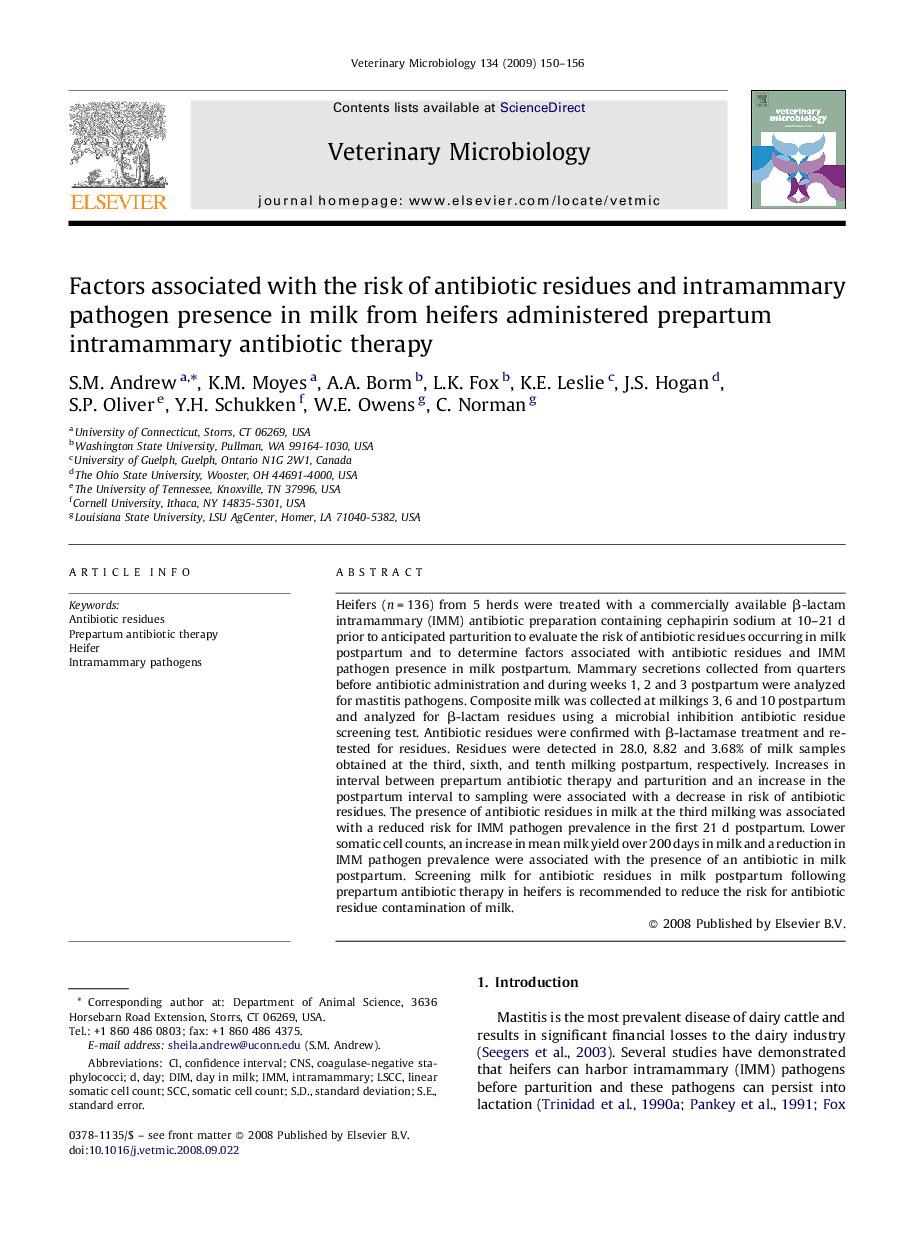| Article ID | Journal | Published Year | Pages | File Type |
|---|---|---|---|---|
| 2468653 | Veterinary Microbiology | 2009 | 7 Pages |
Heifers (n = 136) from 5 herds were treated with a commercially available β-lactam intramammary (IMM) antibiotic preparation containing cephapirin sodium at 10–21 d prior to anticipated parturition to evaluate the risk of antibiotic residues occurring in milk postpartum and to determine factors associated with antibiotic residues and IMM pathogen presence in milk postpartum. Mammary secretions collected from quarters before antibiotic administration and during weeks 1, 2 and 3 postpartum were analyzed for mastitis pathogens. Composite milk was collected at milkings 3, 6 and 10 postpartum and analyzed for β-lactam residues using a microbial inhibition antibiotic residue screening test. Antibiotic residues were confirmed with β-lactamase treatment and re-tested for residues. Residues were detected in 28.0, 8.82 and 3.68% of milk samples obtained at the third, sixth, and tenth milking postpartum, respectively. Increases in interval between prepartum antibiotic therapy and parturition and an increase in the postpartum interval to sampling were associated with a decrease in risk of antibiotic residues. The presence of antibiotic residues in milk at the third milking was associated with a reduced risk for IMM pathogen prevalence in the first 21 d postpartum. Lower somatic cell counts, an increase in mean milk yield over 200 days in milk and a reduction in IMM pathogen prevalence were associated with the presence of an antibiotic in milk postpartum. Screening milk for antibiotic residues in milk postpartum following prepartum antibiotic therapy in heifers is recommended to reduce the risk for antibiotic residue contamination of milk.
